
The Canberra Hotel was a temperance hotel on the western corner of Ann and Edward Streets, Brisbane, Queensland, Australia. [1]

The Canberra Hotel was a temperance hotel on the western corner of Ann and Edward Streets, Brisbane, Queensland, Australia. [1]

The site had long been associated with the temperance movement, having formerly been occupied by the Temperance Hall operated by the Brisbane Total Abstinence Society [2] [3] and located directly opposite the People's Palace (another temperance hotel operated by the Salvation Army). The foundation stone for the Temperance Hall was laid on 28 March 1864 by the Queensland Governor George Bowen, at which time the site was criticised as scarcely so central as one might desire. [4] However, the Temperance Hall itself was not built until 5 years later at a cost of £716. [2]

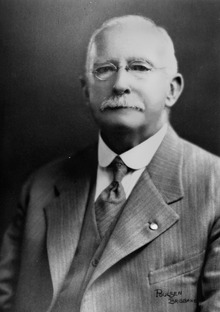
The Canberra Hotel was built by the Queensland Prohibition League (later the Queensland Temperance League). The foundation stone was laid on Saturday 30 July 1927 by the Lord Mayor of Brisbane William Jolly with the intention to build a 5-storey building at a cost of £95,000; coins found buried under the foundation stone of the old Temperance Hall were reburied under the Canberra's foundation stone along with current newspapers and documents relating to the affairs of the Queensland Prohibition League. The architect was Arnold Edwin Brooks. The building was financed by private benefactors, particularly William Robert Black and George Marchant, and through a low-interest loan from the Independent Order of Rechabites (a friendly society committed to temperance). [1] [2] [5] There was ill-feeling that Black and Marchant were levied for gift tax by the Queensland Government in relation to their donations, but in July 1929 as the building neared completion, an act of parliament was passed to exempt these donations from gift tax. [6]
In January 1928, it was decided to add two more storeys to the building (seven in total) and to provide hot and cold water into each room, increasing the cost to £120,000. [7]
The seven-story concrete-reinforced building was constructed by Blair Cunningham and the Canberra Temperance Hotel was officially opened on 20 July 1929 by George Marchant. Portraits of the benefactors Black and Marchant were unveiled in the dining room; these had been commissioned from Sydney artist Norman St Clair Carter in January 1929. [8] [9] The dinner to celebrate the opening was marred by the Queensland Treasurer Walter Henry Barnes and Member of the Queensland Legislative Assembly Mick Kirwan walking out after the loyal toast. They had noticed that the order of proceedings had the toast to the Queensland Parliament as the last toast (after the toasts to the benefactors, the temperance league and associated societies, the architect and builder); they felt this was a serious breach of protocol insulting to the Queensland Parliament. [10]
Despite doubts expressed by others, the Canberra Hotel proved that a high quality hotel could be successful without the sale of alcohol. [1] It was very popular, attracting 442,001 guests between 1930 and 1935. In 1934, a decision was made to add a further 3 storeys with 200 beds in larger bedrooms with private bathrooms; the original architect Arnold Brooks had designed the building to be structurally able to be extended in this way. [5] [11] The extensions would make it the largest hotel in Australia. [12]
The Lamplight Bar at the Canberra was the first non-alcoholic bar in Queensland and specialised in virgin cocktails and was claimed to have the widest range of non-alcoholic beverages in Australia. As it did not serve alcohol, it was a popular choice for school formals and Methodist weddings. The wedding of Joh and Flo Bjelke-Petersen was held at the Canberra in 1952. [5]
In September 1952, it was announced that a second 11-storey block would be built in Ann Street between the existing hotel and the Brisbane School of Arts to provide another 200 rooms at the cost of £200,000. [13]
The temperance league sold the hotel in 1985 and the new owner applied for a liquor license and served alcohol for the first time on the premises on 3 March 1986. [5]

In 1987, the hotel was closed and demolished to build a 104-storey office tower called Central Place, which would have been the world's tallest building at that time; however; that project never commenced. Later an office tower for software developer Mincom was built on the site. [1] [5]

Other Canberra Hotels were established or planned in other Queensland towns by the temperance league.
The Queensland Temperance League expanded its range of intervention and support programs from alcohol to include drugs and mental health. In 2015, it operates as Healthy Options Australia and is one of Australia's leading service providers in the prevention, treatment and rehabilitation services in these areas. [3]

Gordon Park is a northern suburb in the City of Brisbane, Queensland, Australia. In the 2021 census, Gordon Park had a population of 4,390 people.

Annerley is a suburb in the City of Brisbane, Queensland, Australia. In the 2021 census, Annerley had a population of 11,891 people.

Parliament House in Brisbane is the meeting place of the Parliament of Queensland, housing its only chamber, the Legislative Assembly. It is located on the corner of George Street and Alice Street at Gardens Point in the CBD, and is next to the Queensland University of Technology and City Botanic Gardens. It was listed on the Queensland Heritage Register on 21 October 1992.

Kedron is a northern suburb in the City of Brisbane, Queensland, Australia. It is home to the Queensland Fire and Emergency Services headquarters. In the 2021 census, Kedron had a population of 9,907 people.

Bardon is a western suburb of the City of Brisbane, Queensland, Australia. It is located approximately 5.7 kilometres (3.5 mi) north-west of the Brisbane CBD. Bardon is a leafy residential suburb, much of which nestles into the foothills of Mount Coot-tha. It includes the neighbourhood of Rainworth. In the 2021 census, Bardon had a population of 10,153 people.
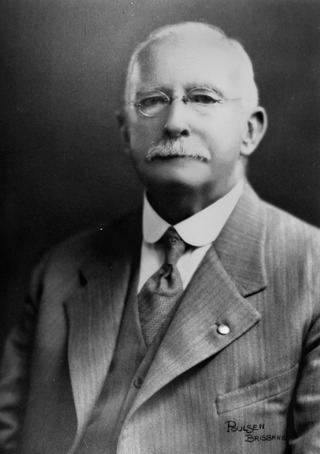
George Marchant was a soft-drink manufacturer and philanthropist in Brisbane, Colony of Queensland.
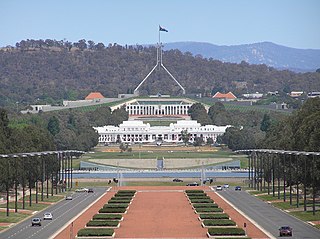
John Smith Murdoch was a Scottish architect who practised in Australia from the 1880s until 1930. Employed by the newly formed Commonwealth Public Works Department in 1904, he rose to become chief architect, from 1919 to 1929, and was responsible for designing many government buildings, most notably the Provisional Parliament House in Canberra, the home of the Parliament of Australia from 1927 to 1988.

The Star Gold Coast is a casino and hotel located in the suburb of Broadbeach on the Gold Coast in Queensland, Australia. The casino, which was Queensland's first, is situated next to the Nerang River and is operated by Star Entertainment Group. It opened in November 1985 as Conrad Jupiters. In 2017 it was rebranded as The Star, Gold Coast.

Theodore is a rural town and locality in the Shire of Banana, Queensland, Australia. It was established in the 1920s as part of Queensland Premier Ted Theodore's ambitious Dawson River Irrigation Scheme which failed to eventuate. It was originally known as Castle Creek, but that name is now used by another locality in the area.

George Street is a major street located in the Brisbane CBD in Brisbane, Queensland, Australia.

A coffee palace was an often large and elaborate residential hotel that did not serve alcohol, most of which were built in Australia in the late 19th century.
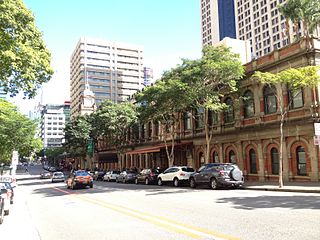
Ann Street runs parallel to Adelaide Street and is the northernmost street in the Brisbane CBD in Queensland, Australia. The street is named for Anne, Queen of Great Britain, as part of the CBD street naming series of female British royalty. It is a major thoroughfare, linking as a four-lane one-way street the suburb of Fortitude Valley in the northeast with the Riverside Expressway in the southwest; house numbers run the opposite direction.

Charlotte Street is a road in the central business district of Brisbane, Queensland, Australia. The street is one of a number that were named after female queens and princesses of the royal family shortly after the penal colony was settled. Mary Street runs parallel to the south and Elizabeth Street is the next street to the north.

The People's Palace is a heritage-listed building and a former temperance hotel in the Brisbane CBD, City of Brisbane, Queensland, Australia. It is located at 308 Edward Street on the southern corner with Ann Street, diagonally opposite to Brisbane's Central Railway Station. It was designed by Colonel Saunders and built from 1910 to 1911. It was added to the Queensland Heritage Register on 21 October 1992.
The Queensland PGA Championship is a golf tournament on the PGA Tour of Australasia. The tournament is currently held at Nudgee Golf Club in Nudgee.

Ann Street Presbyterian Church is a heritage-listed Presbyterian church at 141 Ann Street, Brisbane City, City of Brisbane, Queensland, Australia. It was built in 1858 by Joshua Jeays, altered and extended in 1897 to a design by Alexander Brown Wilson with further extensions designed by Douglas Francis Woodcraft Roberts in 1936. The church was added to the Queensland Heritage Register on 21 October 1992.
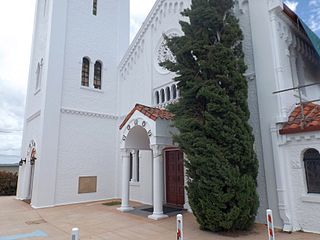
Holy Trinity Anglican Church is a heritage-listed Anglican church at 68 Hawthorne Street, Woolloongabba, Brisbane, Queensland, Australia. Since 1869, three church buildings have stood on this hill top site. The current church was completed in 1930. It was designed by the architect Eric Ford, featuring Romanesque and Spanish Mission Revival style architecture. Its preserved original architectural features make the church a traditional wedding venue of inner Brisbane. The church was added to the Queensland Heritage Register on 9 May 2008.
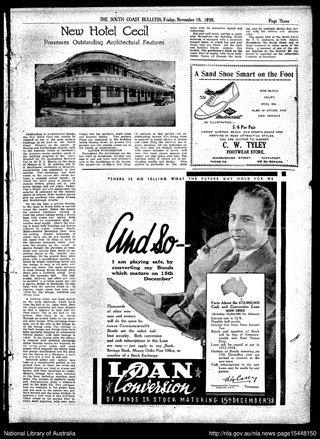
The Hotel Cecil is an Art Deco hotel located on the south western corner of the intersection of Scarborough and Nerang Streets in Southport, Queensland, Australia. It has been recommended that it be added to the Queensland Heritage Register due to its rarity, high architectural value and contribution to the character of the street.

William Herbert Green was a member of the Queensland Legislative Assembly in Australia.

William Robert Black (1859–1930) was an Australia mine-owner and philanthropist. He donated to establish many Presbyterian churches and supported schools, orphanages and other charitable institutions in Queensland.